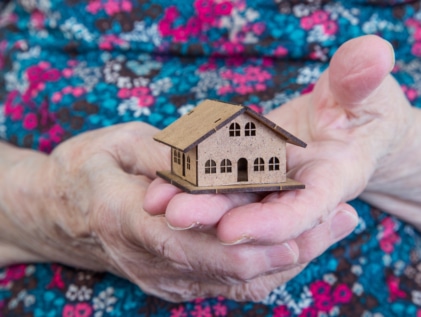Are your parents weighing the decision to stay in their own home?
A senior’s decision to age in place for as long as they are safely able does not come lightly, for the senior in question or their loved ones. While the choice is ultimately made to maintain a certain quality of life as they age, several risk factors present themselves starting at 65 years old.
Aging in place is “the ability to live in one’s own home and community safely, independently, and comfortably, regardless of age, income, or ability level.” However, the 90% of seniors that prefer to stay in their own home must ask themselves one major question before choosing their path: What will it cost me?
If your mom and dad are interested in exploring a home remodel in lieu of relocation, you must consider which essential updates they will personally require to make their home safe and comfortable for years to come.
What Drives the Biggest Costs?
While the average cost to remodel is $9,000 ($700 low, $40,000 high), no set number demonstrates what it costs to age in place because every person has different needs. While one may require modifications that aid mobility issues, such as grab bars, stair lifts, and accessible entryways, another may only need small enhancements for ease of living, such as changing out the doorknobs and improving the lighting inside and outside for better vision.
The more expensive home upgrades tend to lend to those who require a walker or wheelchair due to injury, illness, or disability. If your loved one has difficulty or is unable to walk, you may need to install an entrance ramp, widen their doorways and hallways, add a stairlift if they live in a multi-story home, upgrade the shower or bathtub to ensure handicapped accessibility, and more. These significant upgrades alone could cost $10,000 to $20,000, depending on the materials used and where they live.
Another major yet essential expense for any senior hoping to age in place is the installation of non-slip flooring. Even the most agile individual is at risk of a slip and fall accident, and proper flooring can help prevent that. However, flooring also costs thousands of dollars.
Affordable DIY Home Upgrades
Aging in place is most cost-effective for seniors needing just a few preventative updates to ensure safe movement around the home and to avoid potential accidents. Even if mom is incredibly able-bodied and suffers little to no ailments, accidents do happen.
There are several DIY home improvements that one can make with the help of a handy friend or family member to cut back on costs and make living at home a more affordable option.
For example, grab bars are a popular addition that make climbing stairs, standing up and sitting down much simpler for seniors, particularly those who have arthritis or other mobility trouble. They are particularly useful on steep staircases (such as the basement), next to the toilet, and in the shower or bathtub. You can install three grab bars around the home for about $140.
Upgrading doorknobs and faucets to lever handles is also a cheap yet life-changing project aiding those with pain in their hands and weakened grip strength. You can also easily safety-proof a shower or tub with slip-resistant flooring, using mats with suction cups, sprays or adhesives for as little as $10 to $40.
Ready to start upgrading your mom and dad’s home? The most important aspects to keep in mind are safety and comfort.
If you or a loved one are forgoing senior living and opting instead for aging in place, keep these financial factors in mind when planning your renovation. Always consult an expert, such as a Certified Aging-In-Place Specialist (CAPS), before making a decision.
Perhaps our Family Decision Guide could help? It’s packed with information and tools to help you weigh up your options, and see whether a vibrant senior living community may be just right for you. Download it to ensure you make the decision that best suits your needs.


